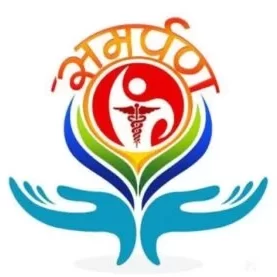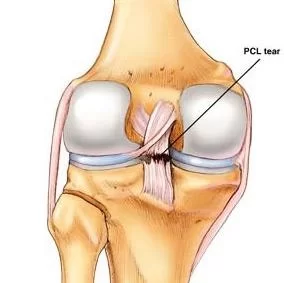Neck Strain
Table of Contents
What Is The Neck Strain?
When the connective tissue of a neck muscle or tendon over-stretches, it causes a cervical muscle strain. A pulled muscle, sometimes referred to as a cervical muscular strain, may range in severity depending on the position and extent of the cervical muscle tissue tear. A neck strain usually heals on its own within a few days or weeks, although the pain can range from mild and throbbing to acute and excruciating.
The “neck strain” and “neck sprain” are technically referring to distinct types of injuries in the neck. Although a neck sprain affects a tendon rather than a muscle or ligament, the symptoms of neck pain and swelling associated with both conditions are often similar. and decide on their own, although an official opinion may be requested occasionally.
Neck Muscle Function and Strain
The neck region is linked to about twenty muscles.. These muscles work together to offer assistance back the head’s upright position and encourage development of the head, neck, jaw, upper back, and shoulders.
A solid muscle is comprised of various muscle strands. Inside each of these filaments are bundles of myofibrils that contain contractile proteins, which perform the real work for muscle development. When the muscle overextends or stretches too far, tiny rips can occur in the muscle, ligament, or connective tissue between the muscle and ligament, which is typically the weakest component.
Wider neck muscular strains cause more agitation, which in turn causes greater pain, swelling, and a longer recovery period. The strained muscle quality, whereas the damage is mending, generally depends on how many muscle filaments were torn.
The following Levator scapulae, Trapezius are more prone to strain:
Levator scapulae. This muscle is located in the cervical spine to the scapula bone by running across the neck. The levator scapulae plays a key part in bowing and pivoting the neck to the side, and these movements can be prevented if the muscle is strained.
See Simple Levator Scapulae Extension for Neck Pain
Trapezius: This trapezoid-shaped muscle extends from the back area and out to the shoulder from the top of the cervical spine. A variety of actions, including head tilts and cervical extension (looking upwards), are influenced by the upper trapezius muscle.
Symptoms:
- Pain, particularly in the back of the neck, that compounds with movement
- Pain that crests a day or so after the damage, instead of immediately
- The back of the skull hurts
- An increase in irritability, fatigue, difficulty sleeping, and difficulty focusing
- Numbness in the arm or hand
Neck Strain Causes:
- Weak and abused neck muscles: For occurrence, sitting at a work area for a long time especially in unbalanced positions with somewhat strained muscles can cause Pain and solidness in the neck or bear ranges, and some of the time cerebral pains as well. Exercises that include tilting your head back against your neck can also cause muscle issues in the neck region. These incorporate things like portraying a ceiling, or certain sorts of sports such as riding a dashing bicycle or swimming breaststroke with your head in a settled position.
- Wear and tear on the cervical spine: For a lifetime period, the spinal disks become compressed, and small bony formations may form along the edges of the vertebral bodies. The initial phase, the patient should take a rest and use over-the-counter pain medicines.
- Whiplash: This is an injury that can happen if somebody drives into the back of your car in a street mishap. The effect of the collision causes the head to quickly twitch and advance, and at that point, to back up once more. This more often than not causes little wounds in the muscle and connective tissue, horrendously tense muscles, and trouble moving your head for a few days. The indications regularly go absent totally after a brief time.
- A spinal canal constriction or a sliding disk: If a spinal disk protrudes or spills out and presses against a nerve root, or if the vertebral canal is further constrained, neck discomfort may occur. Pain spreads into the back or arm.
Finding the exact source of neck discomfort is frequently impossible because the cervical spine’s bones, ligaments, and nerves are typically too close to one another to determine what caused the problems in the first place.
If no particular cause can be found, specialists allude to the pain as “non-specific neck pain.” It is especially difficult to decide the cause of the neck pain if it’s incessant.
Medical Treatment:
Neck strain treatment involves several approaches to relieve pain and promote recovery. The initial phase, the patient should take a rest and use over-the-counter pain medicines. Applying ice can help reduce inflammation, while heat may relax tight muscles. As your rehabilitation phase continues, gentle stretching exercises and strengthening activities are advised.
For more severe cases, physical therapy, massage, and manual manipulation by trained professionals can be beneficial. In some instances, ultrasound therapy or cervical traction may be employed. If pain persists, a healthcare provider might consider steroid injections or other advanced treatments. Maintaining good posture and ergonomic practices can also aid in prevention and recovery.
Physiotherapy Treatment:
There isn’t sufficient inquiry about the adequacy of most medicines for non-specific neck pain. Applying warm with hot water bottles or pads is one simple way to attempt to decrease the pain. Other medications incorporate extending and strengthening exercises, massages, and pain relief medicine.
Chin Tuck
Another characteristic of stance and the forward-rounded position of the head is that the upper neck, or craniovertebral spine, is forced into extension. To avoid this condition, re-education of the deep cervical flexor muscles is essential.
- Lay on your back, chin tucked against your chest, and envision an axis passing between your ears. Don’t use the sternocleidomastoid muscle on the side of the patient’s neck.
- Hold the tuck for five seconds.
- Perform three sets of ten repetitions.
Upper Trapezius Stretch
Sitting at a computer for more than 30 minutes might generate tension and trigger points in the upper trapezius muscle. Taking a moment for an upper trap stretch might help avoid headaches. Set an alarm during the day to remind yourself to pause and stretch.
It helps by stretching the patient’s neck muscles and upper trapezius.
- Position the patient’s left arm on the right side of your head, as depicted.
- Gently move your head towards the patient’s shoulder.
- Hold for 30 seconds
- Repeat 3–5 repetitions per side.
Lower Trap Lift Off
This exercise is beneficial for the mid-back muscles, namely the lower trapezius. We described how his muscle weakens with rounded shoulders. This exercise will also help you extend the patient’s thoracic spine somewhat.
- Begin by placing the patient’s arms overhead on the partition in a Y posture.
- Don’t slouch your shoulders.
- Raise the patient’s arms away from the partition.
- Maintain a comfortable range of motion.
- Slowly return the arms to the wall.
- Perform three sets of ten repetitions.
Wall Clocks
In addition to stretching, it is critical to re-educate the muscles involved in good posture. The wall clock exercise connects various mid-back muscles that promote posture.
- Set up as demonstrated in the video.
- Reach for each corner and middle spot.
- Touching 6 dots around the clock equals one repeat.
- Maintain correct neck and shoulder posture when performing this exercise.
- Avoid hunching your shoulders; instead, retain your neck in a small chin tuck.
- Repeat 5 times for three sets.
Foam Roller: Thoracic Extension
This stretch or mobilization is useful for getting out of the rounded shoulder posture. In a slumped position, the patient’s thoracic spine is in flexion. This pose helps to strengthen the thoracic extension. There may be several pops, which are joints snapping back into place.
- Lie down and place the foam roller beneath the patient’s upper back.
- Hold the patient’s head to the neck muscles.
- Roll up and down your thoracic spine.
- Make sure you don’t hold your breath during the activity.
- Repeat 10 to 15 times.
Surgery is only considered if a clear cause has been identified and the method might offer relief, for example, if spinal disk tissue is compressing or “squeezing” a nerve. But slipped disks regularly move forward on their own, so surgery ordinarily doesn’t have any major benefits. Spinal surgery in the neck range also carries dangers, so it’s vital to carefully consider the points of interest and impediments of surgery before choosing.
Individuals who have serious, persistent pain may benefit from pain reduction therapy. This is advertised by specialists or psychotherapists who have specialized in making a difference for individuals with long-lasting or extreme pain. Torment administration treatment can help you manage the torment in such a way that it no longer overwhelms your regular life.
Outlook and Prevalence
Neck pain is frequent. An estimated 1 in 3 persons experience it once a year, with women experiencing it more frequently than men.
As people age, their risk of developing chronic cervical muscle pain increases. Furthermore, people who have already had back pain or a slipped disc are more likely to experience chronic neck discomfort.
People who have been mentally scarred by the event or who worry a lot about the implications tend to have a more severe and prolonged issue.
FAQs
How do you treat a strained neck?
Reduce irritation by applying cold, such as an ice pack or ice wrapped in a towel, for up to 15 minutes a few times a day for the to begin with 48 hours. After that, utilize warm. Try taking a warm shower or utilizing a warming cushion on the couch.
How to release tension in the neck?
Neck Lengthening
Take a seat upright in a chair with your face up.
Raise your head so that you are staring at the ceiling.
As much as possible, without causing discomfort, keep the chin inclined up.
Hold the pose for five breaths.
Ten times, repeat this workout.
References:
- Sofianos, D., MD. (n.d.). Neck strain: Causes and remedies. Spine-health. https://www.spine-health.com/conditions/neck-pain/neck-strain-causes-and-remedies.
- Professional, C. C. M. (2025, February 7). Neck pain. Cleveland Clinic. https://my.clevelandclinic.org/health/symptoms/21179-neck-pain
- https://www.impactphysicaltherapy.com/6-exercises-to-reduce-stress-and-strain-in-the-neck/






